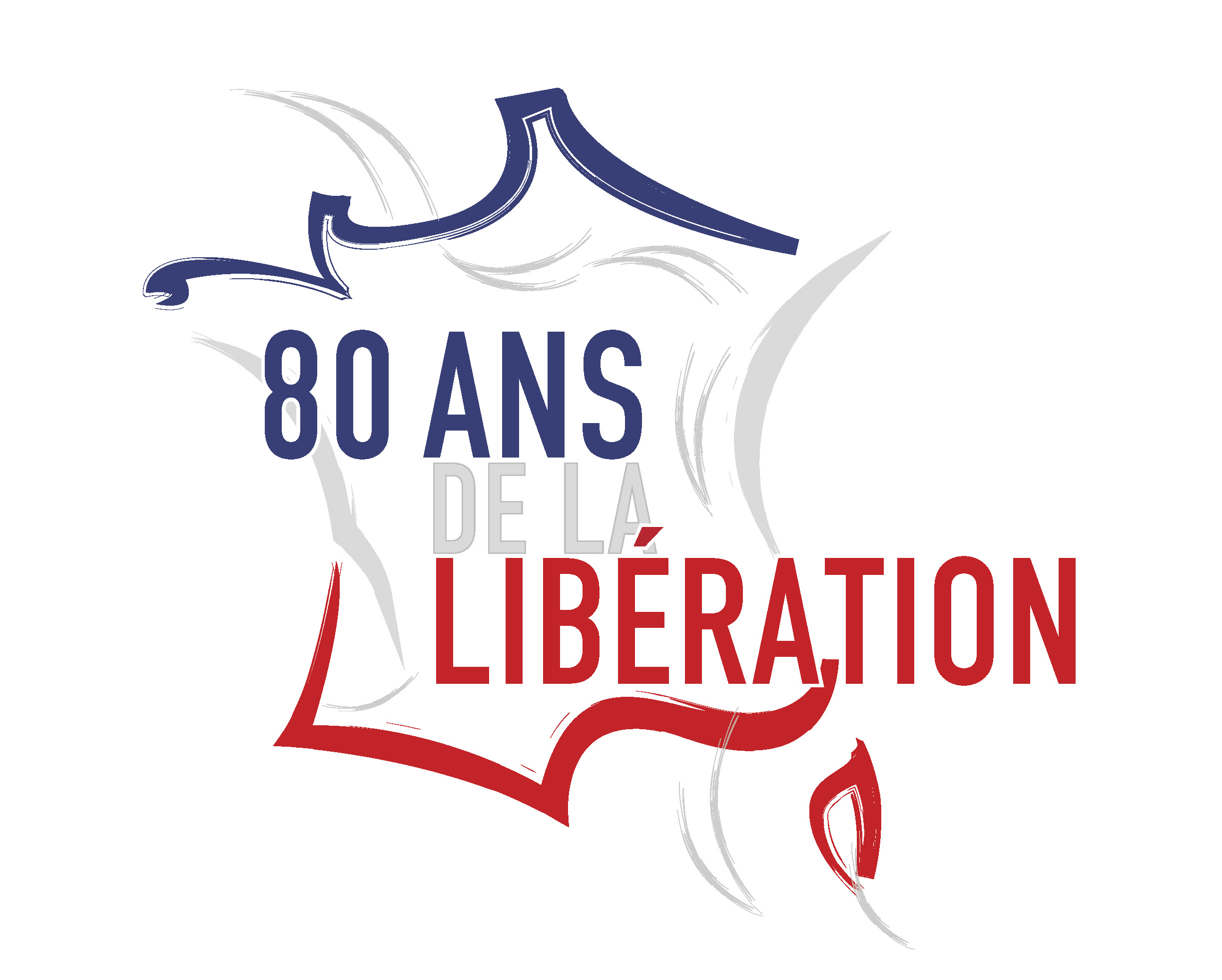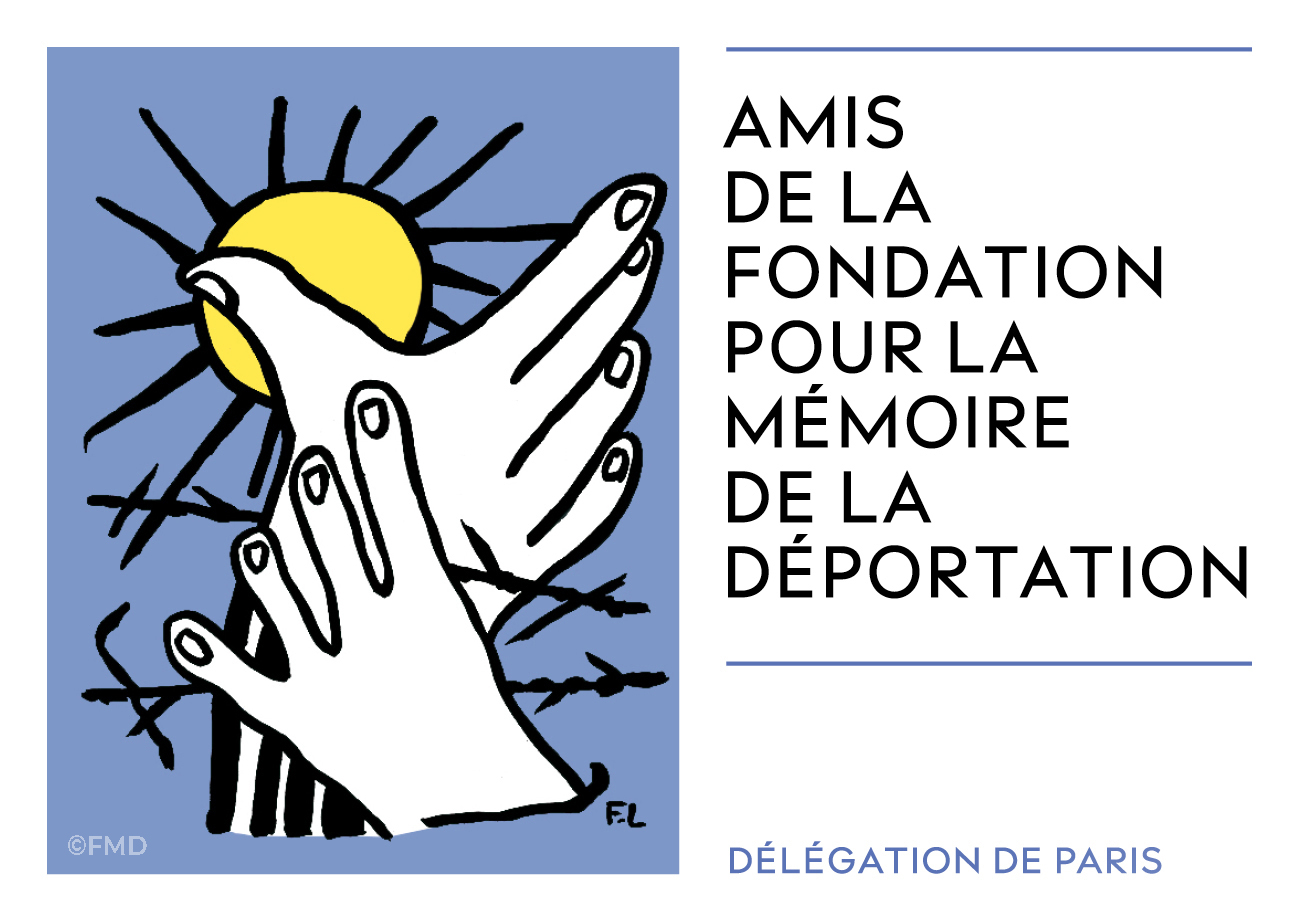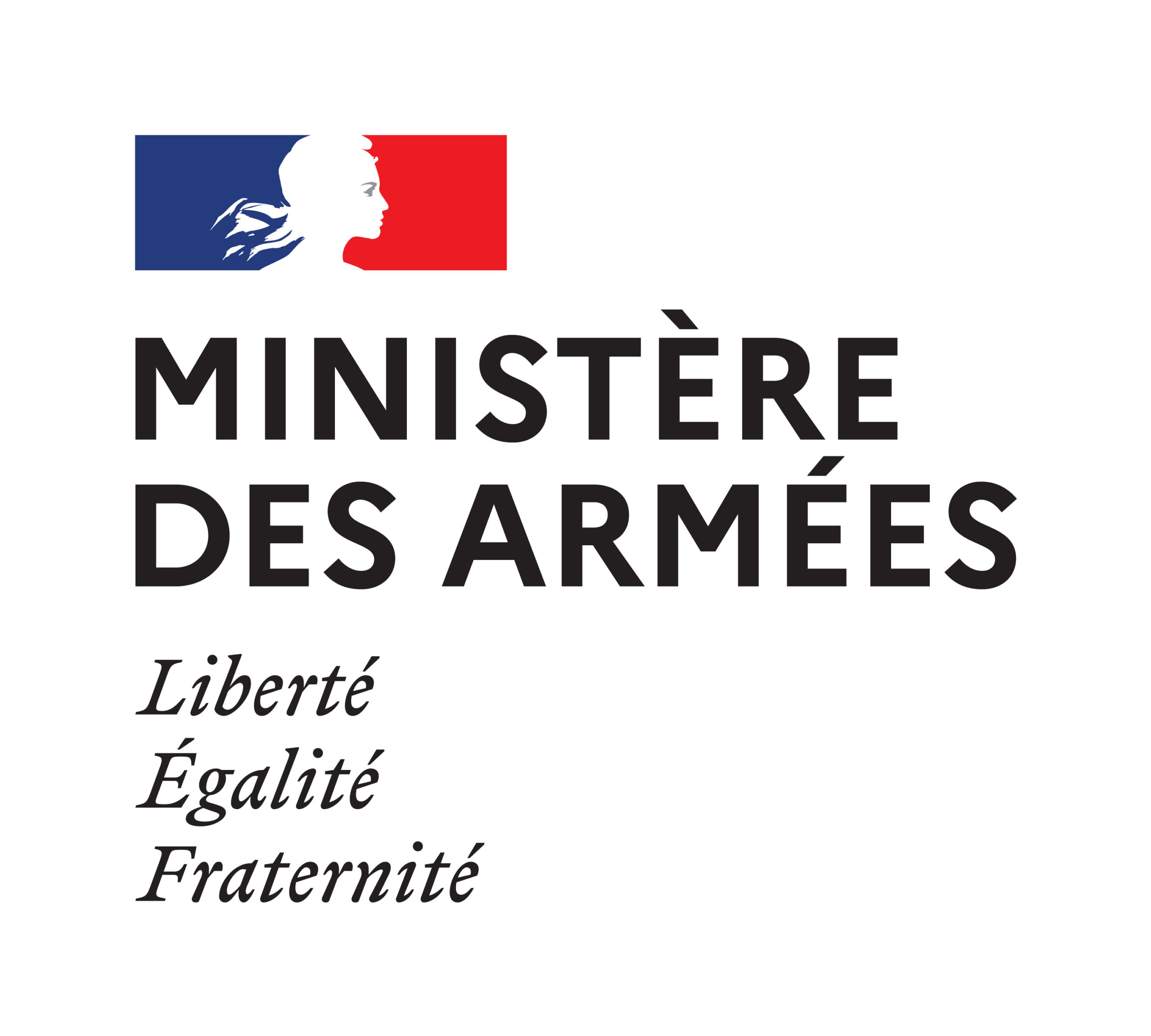CONVOY 73
15 MAY 1944
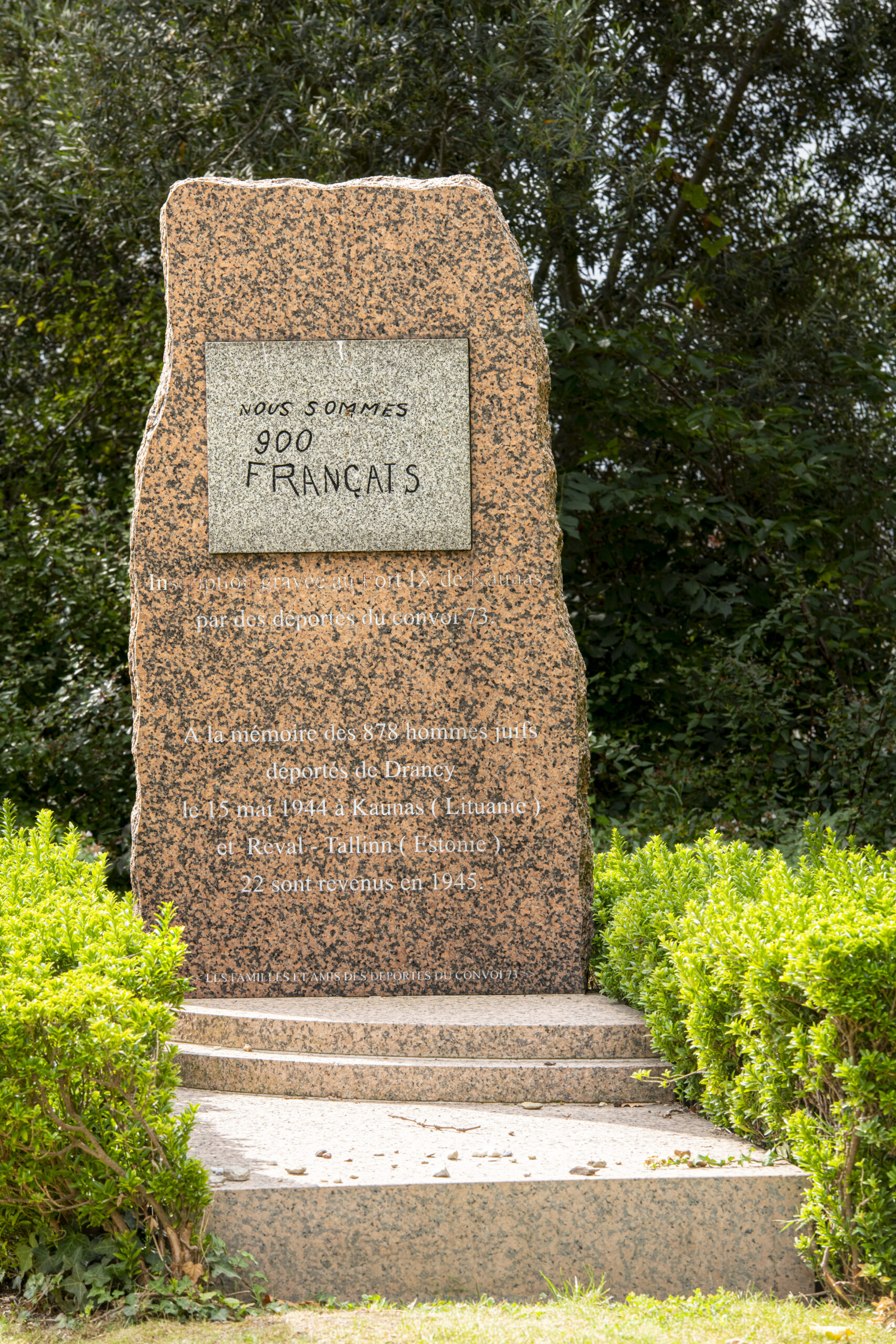
© Vincent Gerbet
Monument Description
Inaugurated on November 26, 2006, this monument, voluntarily sober, is located at the top of the «hill of deportees». It is composed of a stone stele and a granite slab, surrounded by a bed of boxwood. A plaque reproduces an inscription, found after the fall of the Berlin Wall, engraved on a cell wall of Fort IX in Kaunas (formerly Kovno) in Lithuania where two thirds of the deportees of convoy 73 were imprisoned. Small stones are placed on the monument by visitors. The stone symbolizes the continuity of memory in the Jewish religion.
The text on the stele was written by the families and friends of the deportees of this convoy:
«We are 900 French»
Inscription engraved at Fort IX of Kaunas
by the deportees of convoy 73.
In memory of the 878 Jewish men,
deportees from Drancy,
15 May 1944 in Kaunas (Lithuania)
and Reval-Tallinn (Estonia).
22 returned in 1945.”
Convoy 73
Among the 79 convoys deporting Jews from France from Drancy, between March 27, 1942 and August 17, 1944, only four convoys were directed towards Maidanek or Sobibor, another, the very last, towards Buchenwald, and another, this convoy No. 73, which was directed on 15 May 1944 to the Baltic States. The reasons for the latter destination have not yet been clarified.
In April 1944, at the Drancy camp, all able-bodied men were ordered to gather in the courtyard. The camp commander, Aloïs Brunner, reviews the men. A departure of workers will take place under the Todt Organization (civil and military engineering group of the Third Reich, named after its founder Fritz Todt). The future workers do not have enough activity and may be too weak at the time of departure: it is decided to make them do one hour of physical culture per day and increase their food rations.
An event comes to give the selected «Todt» a taste of what awaits them: the city of Noisy-le-Sec undergoes a terrible bombardment, it is destroyed and the railway tracks are out of use. The Germans need this railroad line, we need to clear and defuse the bombs. To carry out this work, 150 of them are driven by bus to Noisy. The results of this first outing: 5 dead, 15 wounded and 5 escapes.
Convoy 73, composed of 878 men including 39 teenagers from 12 to 17 years old leaves on May 15, 1944 from the station of Bobigny.
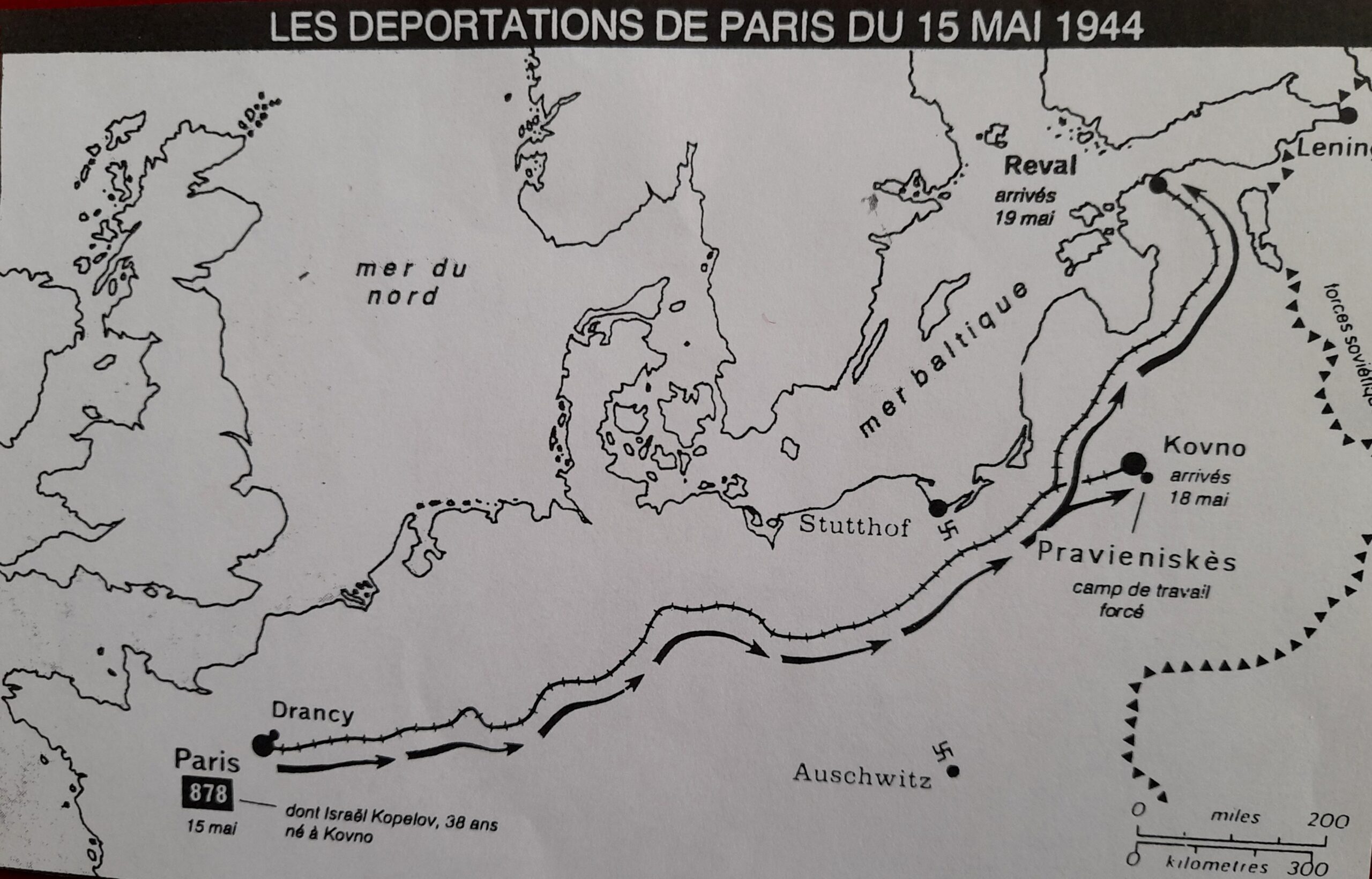
© Martin Gilbert
All are convinced to leave to work for the «Todt». Some are quite satisfied because they were not sent to «Pitchipoï»! (expression used, with a certain humor, by the Jewish prisoners signifying an unknown destination, very far, towards a village of misery in the East).
The testimonies of the very few survivors show that many thought that volunteering for this convoy would give them a better future than those who left in the East, especially since they thought they would stay in France.
The convoy was sent to Lithuania and Estonia, countries invaded in June 1941 by the German army. During this occupation, in these countries, more than 200 sites served as mass assassinations by shootings such as those of the forest of Ponar and Forts VII and IX of Kaunas.
Convoy 73, consisting of 15 wagons, carried 878 Jewish men. More than 500 men got off the train in Kovno (now Kaunas) in Lithuania.
The others are directed to Reval (now Tallinn) in Estonia where they are incarcerated in Patarei prison to build an airport.
In September 1944, the 34 survivors were evacuated to the Stuthoff concentration camp near Danzig in Poland, the last camp liberated on May 9, 1945.
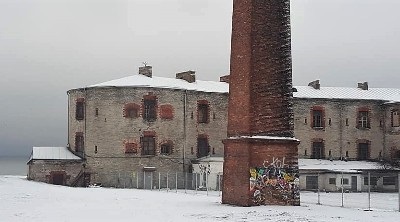
Patarai prison
In Kaunas, the deportees of this convoy are grouped in Fort IX where most of the Jewish communities in the region have already been murdered.
Several of these men left graffiti on the walls of their cell, including the inscription Nous sommes 900 Français. Their discovery helped teach families the destination of this convoy, only after the country’s independence in 1990 …

© AFMD 75
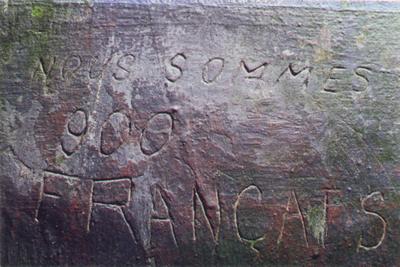
© E.-C. Blum-Cherchevsky
Among them, 350 to 400 were transferred to the sub-camp of Praviéniskès, in the middle of the forest, about ten kilometers from the Fort and obliged to work in sawmills or to extract peat from swamps. Most of them were shot in this forest.
Of this convoy, 24 will return to France: 22 from Tallinn and 2 from Kaunas.
Neither the war archives nor the Nazi criminals tried revealed the reason for the destination of this convoy 73 to the Baltic States and not Auschwitz.
The research of French families, grouped in association since 1995, made it possible to find information on nearly 300 deportees. But no one knows what happened to André and Jean Jacob, father and brother of Simone Veil, or to Miron Zlatin, the director of the Maison des enfants d’Izieu and the two teenagers, Theodor Reis and Arnold Hirsch, arrested by Barbie at the same time as him.
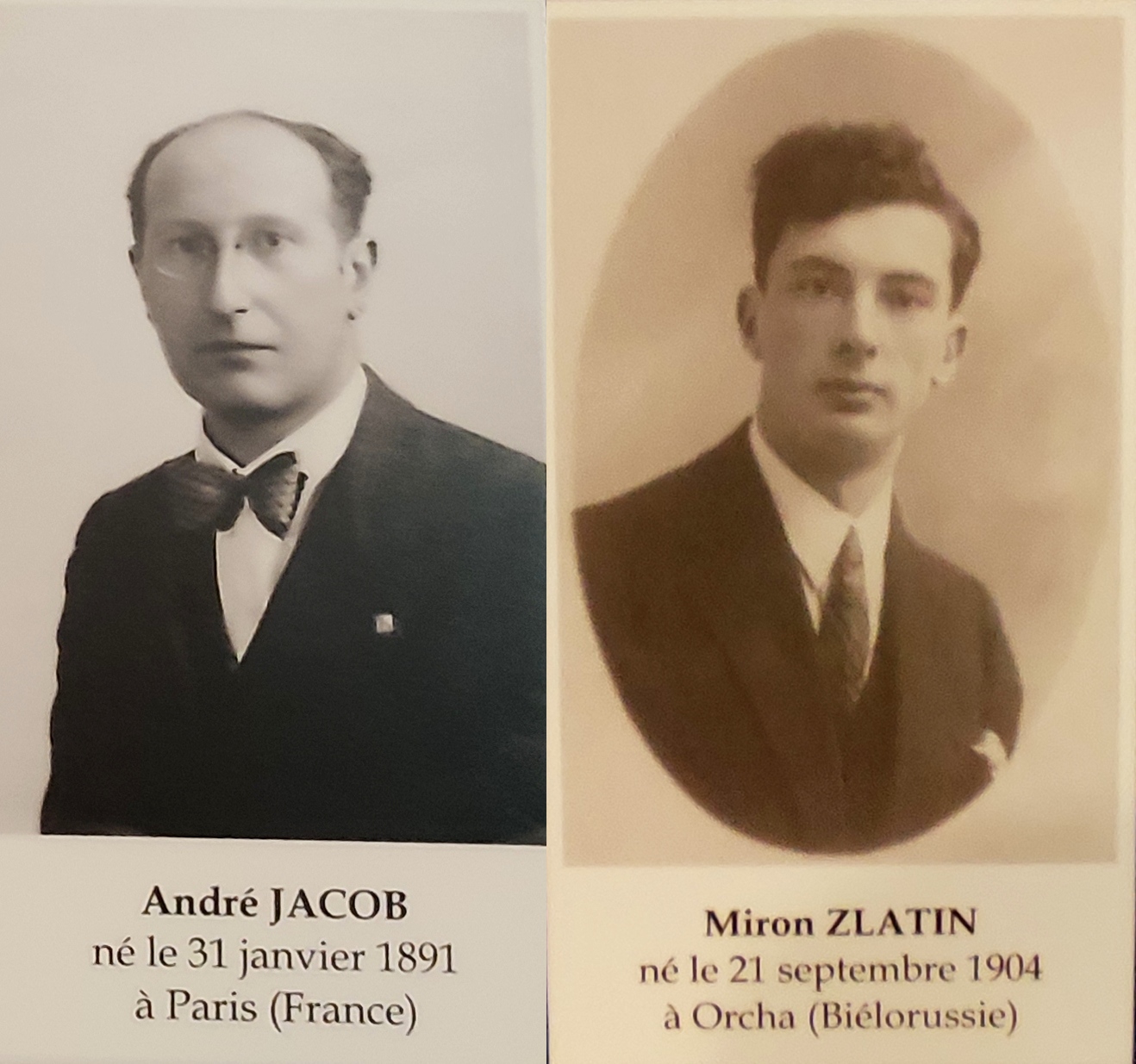
© AFMD 75 / Fort IX Kaunas
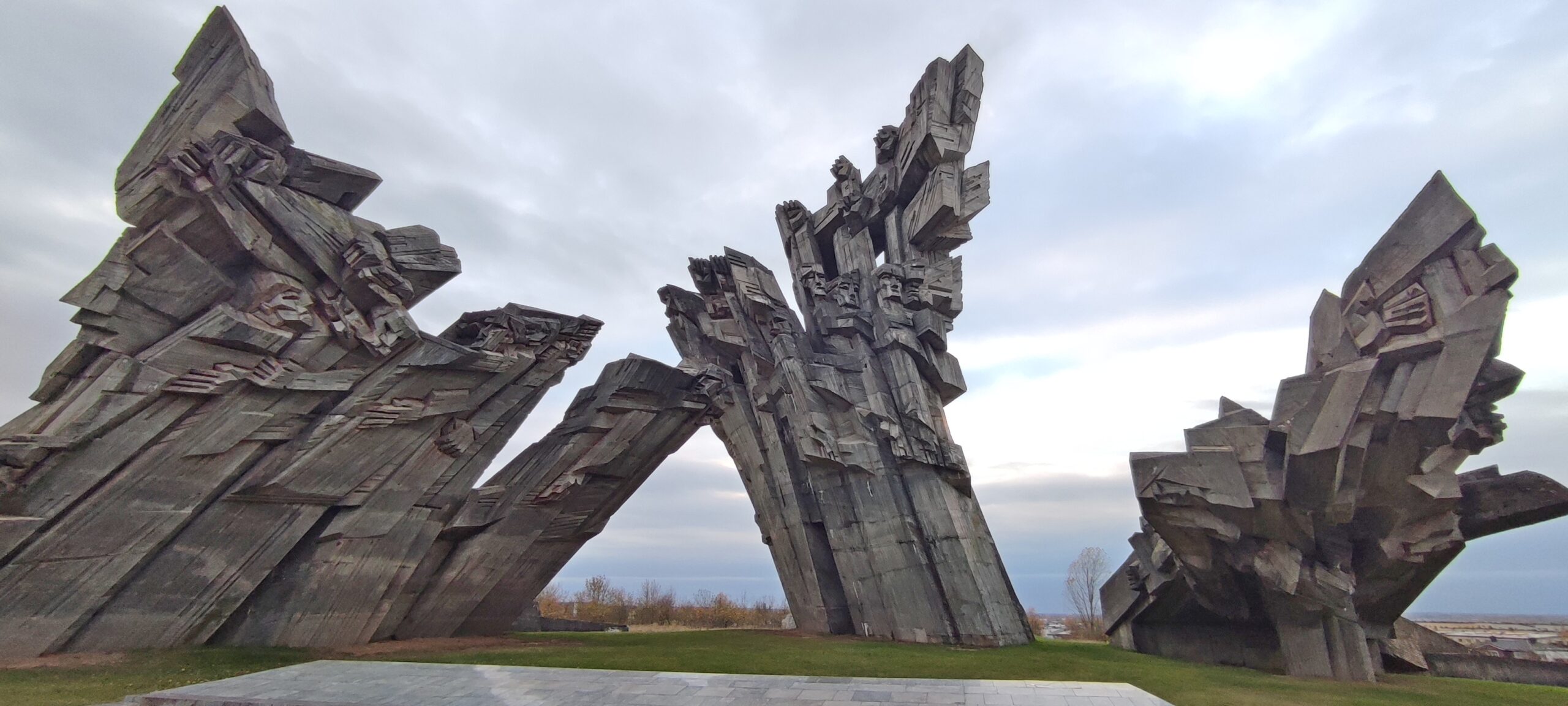
Fort IX monument – Kaunas
© AFMD 75
In 2019, the French Prime Minister, Edouard Philippe, participated in a ceremony of tribute to the deportees of convoy 73 in front of a stele erected in 2010, opposite the Patarei prison, in the presence of the last survivor of convoy 73: Henri Zajdenwergier, born in Nancy in 1927 (still living in 2024).
Sources
Blum-Cherchevsky Ève-Line, Nous sommes 900 Français in http://www.convoi73.org Bulletin de l’AFMD, Mémoire et Vigilance, n°102, oct./déc. 2023.
Bulletin de la FNDIRP, Le Patriote Résistant, n°922, sept. 2017.
Les Amis et passionnés du Père Lachaise : https://www.appl-lachaise.net/monument-aux-deportes-de-kaunas-et-reval-tallinn/ http://www.convoi73.org/francais/SteleLachaise/La%20stele.htm
https://mnemosyne.ee/wp-content/uploads/2020/06/Orjekh.-Intervention-Convoi-73
https://regard-est.com/estonie-la-prison-de-patarei-enjeu-memoriel-insoluble-2
Convoy 73
15 MAI 1944

© Vincent Gerbet
Monument Description
Inaugurated on November 26, 2006, this monument, voluntarily sober, is located at the top of the «hill of deportees». It is composed of a stone stele and a granite slab, surrounded by a bed of boxwood. A plaque reproduces an inscription, found after the fall of the Berlin Wall, engraved on a cell wall of Fort IX in Kaunas (formerly Kovno) in Lithuania where two thirds of the deportees of convoy 73 were imprisoned. Small stones are placed on the monument by visitors. The stone symbolizes the continuity of memory in the Jewish religion.
The text on the stele was written by the families and friends of the deportees of this convoy:
«We are 900 French»
Inscription engraved at Fort IX of Kaunas
by the deportees of convoy 73.
In memory of the 878 Jewish men,
deportees from Drancy,
15 May 1944 in Kaunas (Lithuania)
and Reval-Tallinn (Estonia).
22 returned in 1945.”
Convoy 73
Among the 79 convoys deporting Jews from France from Drancy, between March 27, 1942 and August 17, 1944, only four convoys were directed towards Maidanek or Sobibor, another, the very last, towards Buchenwald, and another, this convoy No. 73, which was directed on 15 May 1944 to the Baltic States. The reasons for the latter destination have not yet been clarified.
In April 1944, at the Drancy camp, all able-bodied men were ordered to gather in the courtyard. The camp commander, Aloïs Brunner, reviews the men. A departure of workers will take place under the Todt Organization (civil and military engineering group of the Third Reich, named after its founder Fritz Todt). The future workers do not have enough activity and may be too weak at the time of departure: it is decided to make them do one hour of physical culture per day and increase their food rations.
An event comes to give the selected «Todt» a taste of what awaits them: the city of Noisy-le-Sec undergoes a terrible bombardment, it is destroyed and the railway tracks are out of use. The Germans need this railroad line, we need to clear and defuse the bombs. To carry out this work, 150 of them are driven by bus to Noisy. The results of this first outing: 5 dead, 15 wounded and 5 escapes.
Convoy 73, composed of 878 men including 39 teenagers from 12 to 17 years old leaves on May 15, 1944 from the station of Bobigny.

© Martin Gilbert
All are convinced to leave to work for the «Todt». Some are quite satisfied because they were not sent to «Pitchipoï»! (expression used, with a certain humor, by the Jewish prisoners signifying an unknown destination, very far, towards a village of misery in the East).
The testimonies of the very few survivors show that many thought that volunteering for this convoy would give them a better future than those who left in the East, especially since they thought they would stay in France.
The convoy was sent to Lithuania and Estonia, countries invaded in June 1941 by the German army. During this occupation, in these countries, more than 200 sites served as mass assassinations by shootings such as those of the forest of Ponar and Forts VII and IX of Kaunas.
Convoy 73, consisting of 15 wagons, carried 878 Jewish men. More than 500 men got off the train in Kovno (now Kaunas) in Lithuania.
The others are directed to Reval (now Tallinn) in Estonia where they are incarcerated in Patarei prison to build an airport.
In September 1944, the 34 survivors were evacuated to the Stuthoff concentration camp near Danzig in Poland, the last camp liberated on May 9, 1945.

Patarai prison
In Kaunas, the deportees of this convoy are grouped in Fort IX where most of the Jewish communities in the region have already been murdered.
Several of these men left graffiti on the walls of their cell, including the inscription Nous sommes 900 Français. Their discovery helped teach families the destination of this convoy, only after the country’s independence in 1990 …

© AFMD 75

© E.-C. Blum-Cherchevsky
Among them, 350 to 400 were transferred to the sub-camp of Praviéniskès, in the middle of the forest, about ten kilometers from the Fort and obliged to work in sawmills or to extract peat from swamps. Most of them were shot in this forest.
Of this convoy, 24 will return to France: 22 from Tallinn and 2 from Kaunas.
Neither the war archives nor the Nazi criminals tried revealed the reason for the destination of this convoy 73 to the Baltic States and not Auschwitz.
The research of French families, grouped in association since 1995, made it possible to find information on nearly 300 deportees. But no one knows what happened to André and Jean Jacob, father and brother of Simone Veil, or to Miron Zlatin, the director of the Maison des enfants d’Izieu and the two teenagers, Theodor Reis and Arnold Hirsch, arrested by Barbie at the same time as him.

© AFMD 75 / Fort IX Kaunas

Fort IX monument – Kaunas
© AFMD 75
In 2019, the French Prime Minister, Edouard Philippe, participated in a ceremony of tribute to the deportees of convoy 73 in front of a stele erected in 2010, opposite the Patarei prison, in the presence of the last survivor of convoy 73: Henri Zajdenwergier, born in Nancy in 1927 (still living in 2024).
Sources
Blum-Cherchevsky Ève-Line, Nous sommes 900 Français in http://www.convoi73.org Bulletin de l’AFMD, Mémoire et Vigilance, n°102, oct./déc. 2023.
Bulletin de la FNDIRP, Le Patriote Résistant, n°922, sept. 2017.
Les Amis et passionnés du Père Lachaise : https://www.appl-lachaise.net/monument-aux-deportes-de-kaunas-et-reval-tallinn/ http://www.convoi73.org/francais/SteleLachaise/La%20stele.htm
https://mnemosyne.ee/wp-content/uploads/2020/06/Orjekh.-Intervention-Convoi-73
https://regard-est.com/estonie-la-prison-de-patarei-enjeu-memoriel-insoluble-2
Délégation de Paris des Amis de la Fondation
pour la Mémoire de la Déportation
31 Boulevard Saint-Germain 75005 Paris
Contact : afmd.dt75@gmail.com
©AFMD75

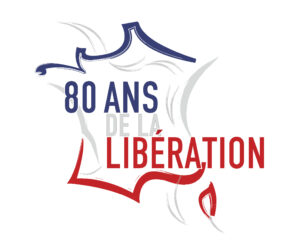
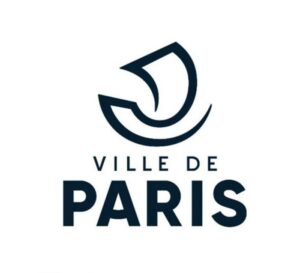
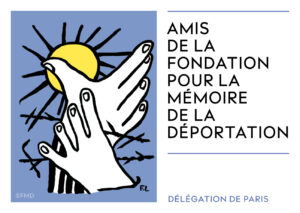
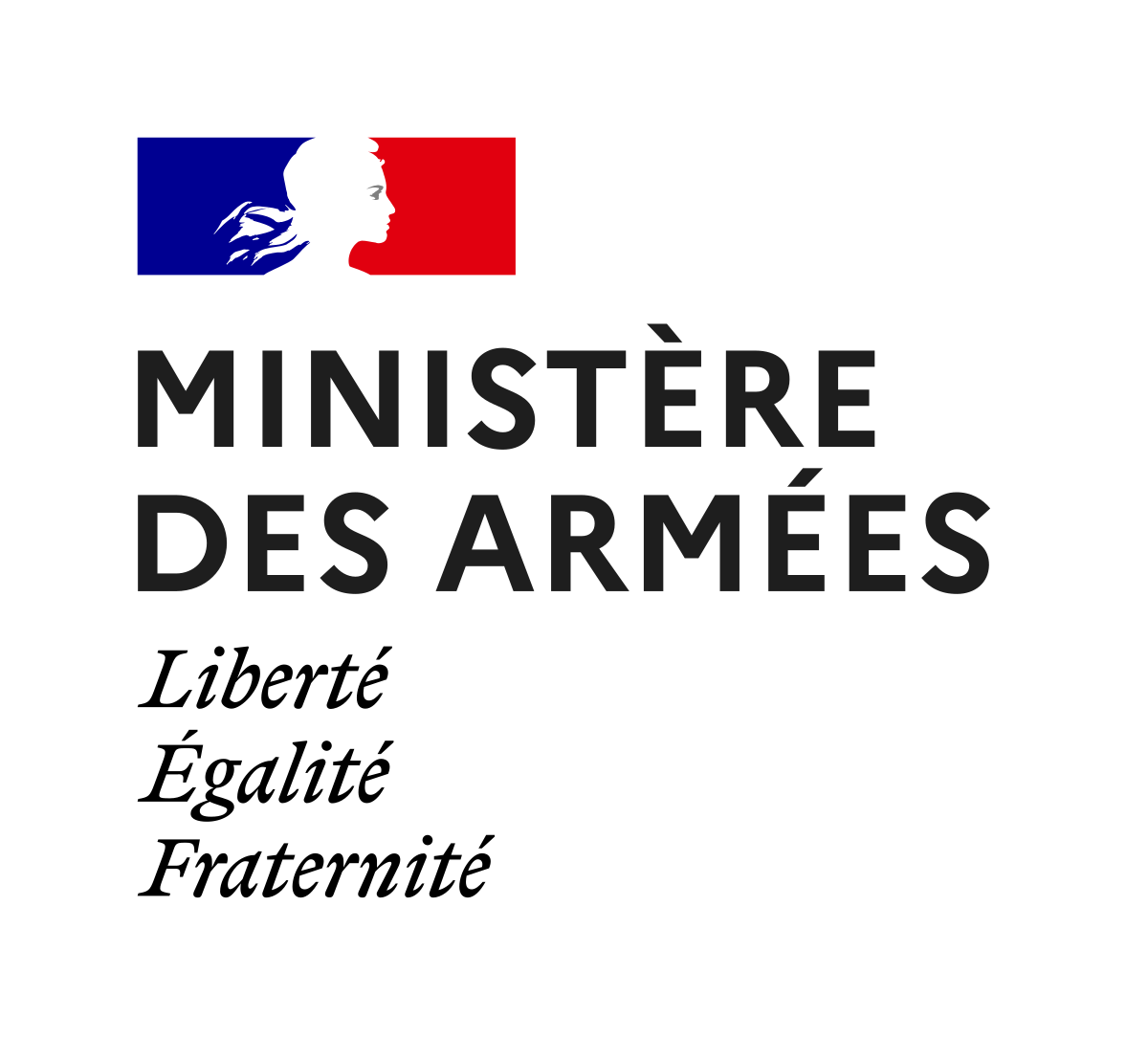
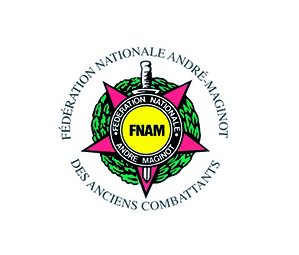
Délégation de Paris
des Amis de la Fondation
pour la Mémoire de la Déportation
31 Boulevard Saint-Germain
75005 Paris
Contact :
afmd75@gmail.com
©AFMD75
Délégation de Paris
des Amis de la Fondation
pour la Mémoire
de la Déportation
31 Boulevard Saint-Germain
75005 Paris
Contact
afmd75@gmail.com
©AFMD75

